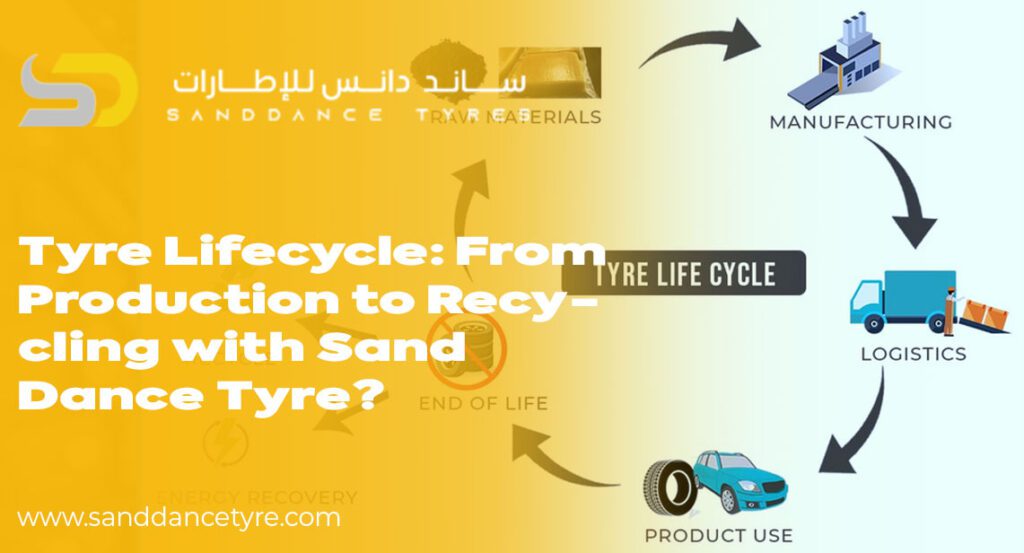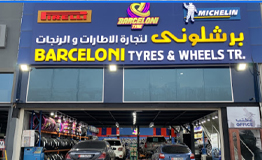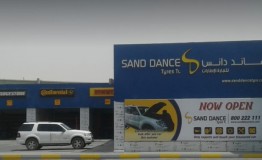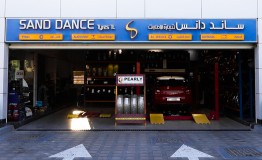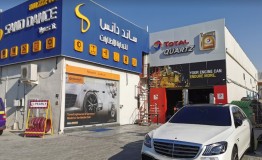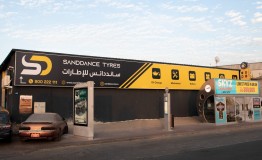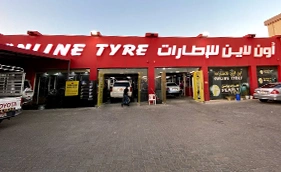Every time out on the road, your car’s tires are putting up with heat, pressure, and road friction as they also support your safety and performance. But have you ever thought about what goes into a tire’s development before it hits the road and what happens to it after? At Sand Dance Tyre, we are of the mind that drivers who take part in the full tyre lifecycle do better at valuing in to play sustainable, safe, and responsible disposal practices in the UAE’s dynamic automotive scene.
Read More: Budget Tyres Desert – Can They Handle Dubai’s Extreme Trips?
Tyre Lifecycle: From Raw Material to Road-Ready Product
The tyre lifecycle begins way before you put them on your vehicle. We start with the acquisition of raw materials tyres, which mainly are rubber, both natural and synthetic. Natural rubber is obtained from rubber trees, and synthetic from petroleum, which we process via chemical compounds to add strength and elasticity. Also, we mix in carbon black, steel, textile fabrics, and chemical additives, which we do to give tires the wear resistance they need for the extreme temperatures and varied terrain we have in the UAE.
Once materials are put together, the manufacturing process goes into forming what will become the tread, side walls, and inner linings, which are the elements that make up the tyre. They are put together and then placed in a mold, which is subject to high heat, thus shaping the tire’s structure and putting in the tread pattern. After going through in-depth quality control and safety inspection, the tire is put out for distribution and sale. At Sand Dance Tyre, we have a large selection of tires that have gone through those in-depth processes, which also see to it that every unit meets international safety and durability standards.
Life on the Road and Performance Wear
Once a tyre is fitted to a vehicle, it goes into what we term its active life, which is for the most part between 40,000 to 80,000 kilometers, which varies by tyre type, driving habits, and road conditions. In the UAE, we see that tires put into service experience progressive wear of the tread, sidewall stress, and heat aging. In some cases, the tyre lifecycle in the UAE may be reduced if proper maintenance via inflation, wheel alignment, and rotation is not practiced.
As tires reach the last third of their tread life, they begin to see performance issues. Braking distances lengthen, fuel efficiency goes down, and wet traction performance suffers. This is a critical part of the tire’s life cycle. It is in this stage that many accidents happen due to worn-out tires, which should have been replaced. At Sand Dance Tyre, we provide tread depth inspections, which will help you determine when it is time for a replacement. We at Sand Dance Tyre put your safety and performance first.
Tyre End-of-Life and Environmental Impact
When a tyre outlives its usefulness, it reaches what is at present called the end of life. Also, we see that many worn-out tyres end up in landfills or open storage, which in turn causes great environmental damage. Tyres are non-biodegradable, and when left unmanaged, they may trap rainwater, cause fire hazards, and, over time, emit harmful chemicals.
However, we see in rubber recycling a great sustainable solution for waste reduction and promotion of circularity in the tyre industry. At Sand Dance Tyre, we are behind initiatives that take end-of-life tires and turn them into rubberized asphalt, playground surfaces, athletic tracks, and also into construction materials. Also, we are conserving raw materials and, at the same time, we are lessening the environmental impact of tire disposal.
In the rubber recycling process, tires are ground out into chips or crumb rubber, which is put to new uses. Also, some tires are retreaded, which gives them a second go if the casing is still in good condition. That step in the tire cycle is at times ignored, but is very much a key element in the reduction of the carbon footprint of today’s transport.
Driving Change: Sand Dance Tyre’s Commitment to a Responsible Tyre Lifecycle
At Sand Dance Tyre, we do more than sell tyres; we are in the business of responsible tyre ownership. We assist you in the choice of high-quality tyres which are built from the best raw materials, and we also educate you on proper tyre care and disposal. Our team is on top of the UAE’s regulations, which include tire age, tread depth, and disposal, which we in turn pass on to you, so your vehicle is not only performing at its best but also operating within environmental guidelines.
We also work with recycling organizations that offer tire return programs, which, for our customers, is a convenient solution for getting rid of old tires. Through our support of tyres at end-of-life initiatives and green practices, we aim to be at the front of the pack in terms of responsible mobility.
Understanding the full spectrum of your tyre lifecycle will have you making better, safer, and more sustainable decisions. At Sand Dance Tyre, we are your guide through each stage from the showroom to the recycler — we smooth your ride and reduce your impact.
FAQs
1. What is the tire wear-out rate in the UAE?
Usually between 40,000 to 80,000 km, which may vary with driving conditions and maintenance.
2. When do I know my tyre is at the end of its life?
Look out for worn tread, cracks, vibration while driving, or if the tire is over 5 years old.
3. Can tires be recycled in the UAE?
Sure. Many recycling companies use tires as a resource for making rubber material for roads, playgrounds, and industry.
4. What’s the importance of tyre disposal to the environment?
Improper disposal causes pollution, fire hazards, and mosquito breeding. Recycling, in turn, decreases these risks and also promotes sustainability.


